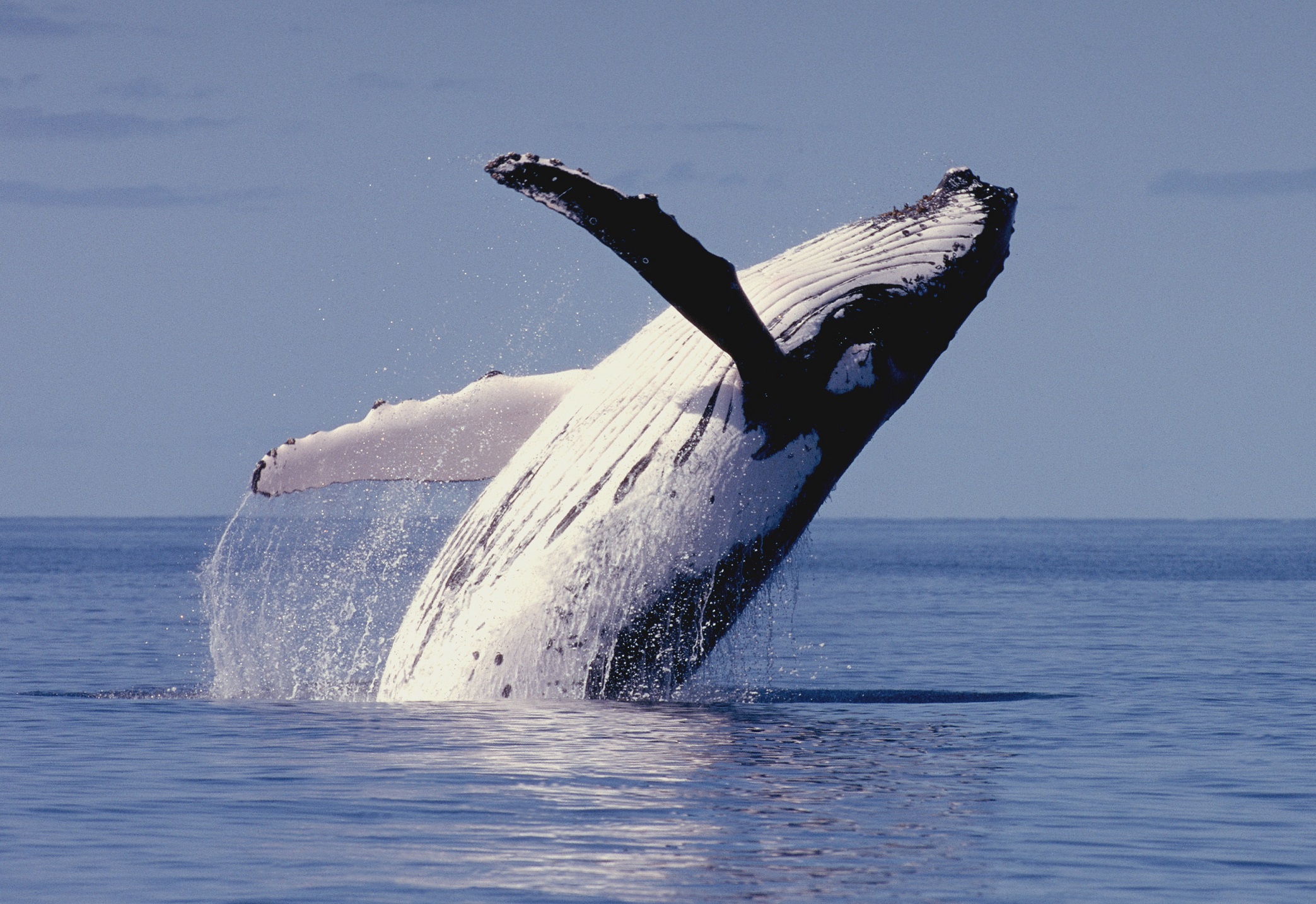 What motivates whales to make social sounds, and will it matter if the noise from increased shipping means they can’t hear each other?
What motivates whales to make social sounds, and will it matter if the noise from increased shipping means they can’t hear each other?
These are questions that University of Queensland PhD student Ms Dana Cusano hopes to answer in a newly-funded study of the acoustic behaviour of humpback whales on the Great Barrier Reef.
“We have no idea what whales are saying,” said Ms Cusano, of the School of Veterinary Science Cetacean Ecology and Acoustics Laboratory (CEAL) which studies acoustic behaviour, population ecology and the impacts of some human activities on cetaceans such as humpback whales.
‘I’m looking at motivational information to figure it out. Can we tell just by their call if they’re aggressive or fearful, for example?”
Ms Cusano said increased shipping around the Great Barrier Reef was a potential threat.
“The noise of large ships and increased traffic can mask whale sounds,” she said.
“We don’t really know what will happen if whales can no longer hear themselves.
“If we can work out how whales use sounds, and how important their calls are, we’ll have a better idea about how shipping will affect them.”
Ms Cusano said sounds were related to motivation in land-based animals, including people, but more research was needed to quantitatively assess the relationship between sounds and motivation in whales.
“They make a few sounds regularly, such as the ‘thwop’, but it’s almost impossible to pinpoint what one call means as it may be used in multiple contexts,” Ms Cusano said.
“I’ll listen to the intensity levels of the same sounds in different contexts, such as in groups of males fighting over access to a female, to see if calls change.”
Little is known about the function of whale sounds or the information encoded within these sounds.
She doubts she’ll hear specific calls in certain situations, which would imply the sounds may have meaning, like words.
“It’s more likely whales convey information in the structure of the sound, varying the frequency, pitch and volume depending on motivation, and signalling their sex, age, and size,” she said.
Ms Cusano graduated Bachelor of Arts in Psychology/Animal Behaviour from Canisius College in Buffalo, NY in 2007.
Her undergraduate research focused on social communication in killer whales at Marineland of Canada. She completed a Master of Research degree in Marine Mammal Science at the University of St Andrews in 2010 and her thesis investigated depth preferences in the acoustic communication of Northern Resident killer whales from the Pacific Northwest.
After her Masters, she worked with Cornell University and Syracuse Universities in New York, before starting her PhD at UQ last year.
She is one of about 100 students to share in more than $1 million funding from the Holsworth Wildlife Research Endowment, announced recently by the Ecological Society of Australia.
Previous UQ recipients of this funding include PhD student in the School of Biological Sciences, Brazilian-born Matheus Mello-Athayde, who featured in publicity for this year’s round. Mr Mello-Athayde is investigating resilience in Great Barrier Reef coral under future global warming and acidification.
Dr Bill Holsworth has supported more than 830 students since establishing the Holsworth Wildlife Research Endowment with his wife Carol in 1989. The fund is now managed through a partnership with the Ecological Society of Australia. More information about the Holsworth Wildlife Research Endowment is available at http://www.ecolsoc.org.au/endowments
Media: Dana Cusano, d.cusano@uq.edu.au, (07) 5460 1877



